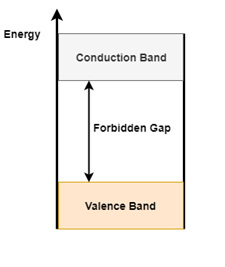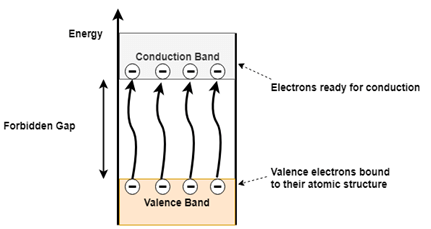Products Category
- FM Transmitter
- 0-50w 50w-1000w 2kw-10kw 10kw+
- TV Transmitter
- 0-50w 50-1kw 2kw-10kw
- FM Antenna
- TV Antenna
- Antenna Accessory
- Cable Connector Power Splitter Dummy Load
- RF Transistor
- Power Supply
- Audio Equipments
- DTV Front End Equipment
- Link System
- STL system Microwave Link system
- FM Radio
- Power Meter
- Other Products
- Special for Coronavirus
Products Tags
Fmuser Sites
- es.fmuser.net
- it.fmuser.net
- fr.fmuser.net
- de.fmuser.net
- af.fmuser.net ->Afrikaans
- sq.fmuser.net ->Albanian
- ar.fmuser.net ->Arabic
- hy.fmuser.net ->Armenian
- az.fmuser.net ->Azerbaijani
- eu.fmuser.net ->Basque
- be.fmuser.net ->Belarusian
- bg.fmuser.net ->Bulgarian
- ca.fmuser.net ->Catalan
- zh-CN.fmuser.net ->Chinese (Simplified)
- zh-TW.fmuser.net ->Chinese (Traditional)
- hr.fmuser.net ->Croatian
- cs.fmuser.net ->Czech
- da.fmuser.net ->Danish
- nl.fmuser.net ->Dutch
- et.fmuser.net ->Estonian
- tl.fmuser.net ->Filipino
- fi.fmuser.net ->Finnish
- fr.fmuser.net ->French
- gl.fmuser.net ->Galician
- ka.fmuser.net ->Georgian
- de.fmuser.net ->German
- el.fmuser.net ->Greek
- ht.fmuser.net ->Haitian Creole
- iw.fmuser.net ->Hebrew
- hi.fmuser.net ->Hindi
- hu.fmuser.net ->Hungarian
- is.fmuser.net ->Icelandic
- id.fmuser.net ->Indonesian
- ga.fmuser.net ->Irish
- it.fmuser.net ->Italian
- ja.fmuser.net ->Japanese
- ko.fmuser.net ->Korean
- lv.fmuser.net ->Latvian
- lt.fmuser.net ->Lithuanian
- mk.fmuser.net ->Macedonian
- ms.fmuser.net ->Malay
- mt.fmuser.net ->Maltese
- no.fmuser.net ->Norwegian
- fa.fmuser.net ->Persian
- pl.fmuser.net ->Polish
- pt.fmuser.net ->Portuguese
- ro.fmuser.net ->Romanian
- ru.fmuser.net ->Russian
- sr.fmuser.net ->Serbian
- sk.fmuser.net ->Slovak
- sl.fmuser.net ->Slovenian
- es.fmuser.net ->Spanish
- sw.fmuser.net ->Swahili
- sv.fmuser.net ->Swedish
- th.fmuser.net ->Thai
- tr.fmuser.net ->Turkish
- uk.fmuser.net ->Ukrainian
- ur.fmuser.net ->Urdu
- vi.fmuser.net ->Vietnamese
- cy.fmuser.net ->Welsh
- yi.fmuser.net ->Yiddish
What is Intrinsic Semiconductor and Extrinsic Semiconductor – Energy Band & Doping?
Date:2021/10/18 21:55:58 Hits:
Semiconductor, as the name suggests is a kind of material whose shows properties of both conductors and insulators. A semiconductor material requires a certain level of voltage or heat to release its carriers for conduction. These semiconductors are classified as ‘intrinsic’ and ‘extrinsic’ based on the number of carriers. The intrinsic carrier is the purest form of semiconductor and an equal number of electrons (negative charge carriers) and holes (positive charge carriers). The semiconductor materials most profoundly used are Silicon (Si), Germanium (Ge), and Gallium Arsenide (GaAs). Let us study the characteristics and behavior of these types of semiconductors.What is an Intrinsic Semiconductor?The Intrinsic semiconductor can be defined as chemically pure material without any doping or impurity added to it. The most commonly known intrinsic or pure semiconductors available are Silicon (Si) and Germanium (Ge). The behavior of the semiconductor on applying a certain voltage is dependent on its atomic structure. The outermost shell of both Silicon and Germanium have four electrons each. To stabilize each other nearby atoms form covalent bonds based on the sharing of valence electrons. This bonding in the crystal lattice structure of Silicon is illustrated in figure 1. Here it can be seen that the valence electrons of two Si atom pair together to form a Covalent Bond.  Figure 2 (a). Energy band diagram Figure
Figure 2 (a). Energy band diagram Figure  Figure 2(b). Conduction and Valence band electrons in a semiconductor When a semiconductor material is subjected to heat or applied voltage few of the covalent bonds break, which generates free electrons as shown in figure 2 (b). These free electrons get excited and gain energy to overcome the forbidden gap and enter the conduction band from the valence band. As the electron leaves valence band, it leaves behind a hole in the valence band. In an intrinsic semiconductor always an equal number of electrons and holes will be created and hence it exhibits electrical neutrality. Both the electrons and holes are responsible for conduction of current in the intrinsic semiconductor.What is an Extrinsic Semiconductor?The extrinsic semiconductor is defined as the material with an added impurity or doped semiconductor. Doping is the process of deliberately adding impurities to increase the number of carriers. The impurity elements used are termed as dopants. As the number of electrons and holes is greater in extrinsic conductor it exhibits greater conductivity than intrinsic semiconductors. Based on the dopants used the extrinsic semiconductors are further classified as ‘N-type semiconductor’ and ‘P-type semiconductor’.N-type Semiconductors:The N-type semiconductors are doped with pentavalent impurities. The pentavalent elements are called so as they have 5 electrons in their valence shell. The examples of pentavalent impurity are Phosphorus (P), Arsenic (As), Antimony (Sb). As depicted in figure 3, the dopant atom establishes covalent bonds by sharing four of its valence electrons with four neighboring silicon atoms. The fifth electron remains loosely bound to the nucleus of the dopant atom. Very less ionization energy is required to set free the fifth electron so that it leaves valence band and enters the conduction band. The pentavalent impurity imparts one extra electron to the lattice structure and hence it is called as the Donor impurity.
Figure 2(b). Conduction and Valence band electrons in a semiconductor When a semiconductor material is subjected to heat or applied voltage few of the covalent bonds break, which generates free electrons as shown in figure 2 (b). These free electrons get excited and gain energy to overcome the forbidden gap and enter the conduction band from the valence band. As the electron leaves valence band, it leaves behind a hole in the valence band. In an intrinsic semiconductor always an equal number of electrons and holes will be created and hence it exhibits electrical neutrality. Both the electrons and holes are responsible for conduction of current in the intrinsic semiconductor.What is an Extrinsic Semiconductor?The extrinsic semiconductor is defined as the material with an added impurity or doped semiconductor. Doping is the process of deliberately adding impurities to increase the number of carriers. The impurity elements used are termed as dopants. As the number of electrons and holes is greater in extrinsic conductor it exhibits greater conductivity than intrinsic semiconductors. Based on the dopants used the extrinsic semiconductors are further classified as ‘N-type semiconductor’ and ‘P-type semiconductor’.N-type Semiconductors:The N-type semiconductors are doped with pentavalent impurities. The pentavalent elements are called so as they have 5 electrons in their valence shell. The examples of pentavalent impurity are Phosphorus (P), Arsenic (As), Antimony (Sb). As depicted in figure 3, the dopant atom establishes covalent bonds by sharing four of its valence electrons with four neighboring silicon atoms. The fifth electron remains loosely bound to the nucleus of the dopant atom. Very less ionization energy is required to set free the fifth electron so that it leaves valence band and enters the conduction band. The pentavalent impurity imparts one extra electron to the lattice structure and hence it is called as the Donor impurity.Leave a message
Message List
Comments Loading...

